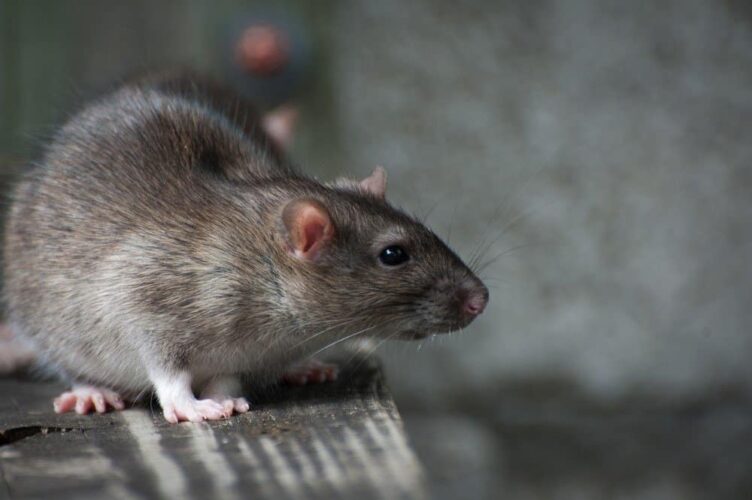With their stores of animal feed and fodder, and nice, warm stables, smallholdings are always going to be targeted by mice and rats and there are a number of ways to deal with this problem. Using poisons creates a threat to domestic pets, owls and other natural predators, so smallholders consider other solutions. We can look at ways of killing the pests or we can look at repellents which will keep them away from our homes, stables and storage rooms.
Chemical poisons often contain anticoagulants, which cause thinning of the blood, leading to the animal dying of internal bleeding. But, because nobody wants a roof space littered with the rotted corpses of dead mice and rats (and the attendant smell while they rot) such compounds often include an ingredient that induces extreme thirst. This forces the rodent to urgently seek water to drink, often resulting in it leaving the relative sanctuary of the roof and descending to ground level to find a source of water. Once its thirst is quenched it starts to die, hopefully without re-entering the roof. This is a slow and painful death in the open.
If a dog, cat or bird eats a poisoned rodent, it will suffer what is called secondary poisoning and it will probably suffer negative effects as well. These may be indirect, where the liver functioning is affected or the immune system compromised or the effect may be fatal.
Avian experts estimate that 85% of birds that eat poisoned rodents will die. This applies to owls, kites, kestrels, hawks and eagles. Eating poisoned rats and mice can also be fatal to mongooses, genets, servals and snakes. So to prevent the creation of a toxic food web, we need to choose measures which will not have secondary repercussions.
There are rodenticides which are based on natural ingredients. A common ingredient is cholecalciferol, which is a form of vitamin D3. This compound causes loss of appetite and it also deposits high calcium loads in intestines and blood vessels. The two effects result in death within four to seven days.
The manufacturers maintain that the rodent feels discomfort but no pain. The compound is regarded as being of very low risk to birds. Dogs and cats would have to eat a large number of rats or mice poisoned with cholecalciferol to be affected. It is still very important that the label instructions are followed carefully. It is best to put out the bait in bait boxes or where it is secured and out of reach of pets and children. Look out for products that are endorsed by the Griffon Poison Information Centre as being of low secondary poisoning risk.
It is however far safer, from a secondary poisoning point of view anyway, to focus on deterrents. Scent, light and sound can be used to stop rodents from coming into your buildings. Rodents cannot stand the aroma of mint. Using pure peppermint and spearmint essential oils has been known to eliminate rodent problems safely and effectively. Be sure to use real, natural essential oils. Synthetic fragrances are not going to work. If you intend to spray outside buildings such as feed storage rooms or poultry houses, pour about 15 drops of oil into a spray bottle and add a few drops of milk. Shake until the oil is emulsified, then add three or four cups of water. If you have a problem in your home, put a few drops of peppermint (or spearmint) essential oil onto cotton wool balls, and leave in cupboards. Use cotton towels, soaked in a solution of mint oil and water. Use ten to 15 drops of the oil for four cups of water. Wring excess water from the cloth, and then place anywhere that rodents may be entering the home, or spending time.
As mice and rats generally come out at night while the household is asleep, run an essential oil diffuser for 20 minutes before going to bed. This will spread the aroma molecules throughout the house. You will need to keep replacing the cotton wool balls or towels regularly as the scent will wear off. If possible, plant mint outside the home and near stables, feed rooms, livestock pens and chicken houses.
Mint grows quickly, and profusely, as long as it is watered enough. Also, you will have an almost endless supply of fresh mint to use indoors as a deterrent. Fresh leaves can be left in problem areas as well.
Light is off-putting to these pests. There are strobe light products which disturb and disorientate the intruders, forcing them to leave. These would be good to use in a feed room, where they would not affect your livestock or family. There are devices which combine sound and light. They have an ultrasonic wave repellent as well as an LED strobe light, working on a motion sensor, so that they only work when the rodents set them off. Some of them are solar powered.
There is also a plug-in device which combines ultra-sound waves and electromagnetic action to pulse through household wiring. The idea is that this reaches rodent nest sites within walls, ceilings and wall cavities and forces them to leave the building. The Smallholder has not tested any of these devices.
Check your buildings for holes or spaces where the vermin may enter and cover them up. If you have trees close to a building cut away branches that the rodents could use as a way of gaining access, especially into your roof. Creepers against your walls also offer places for rats and mice to hide and clamber.

